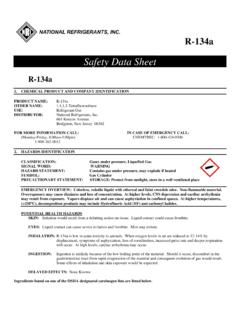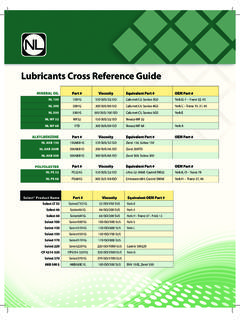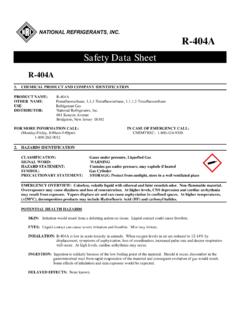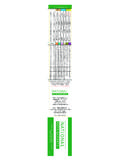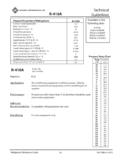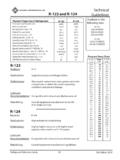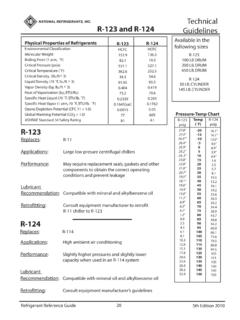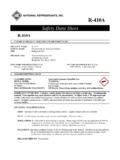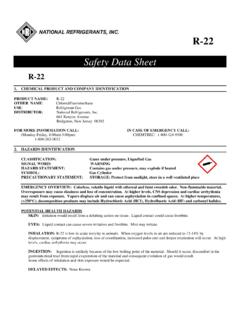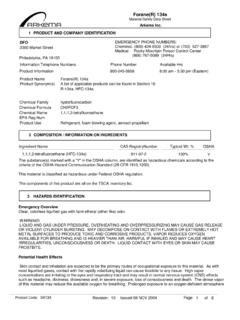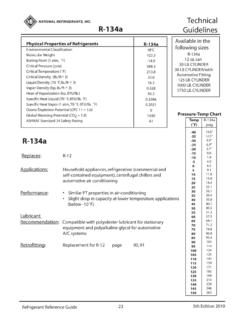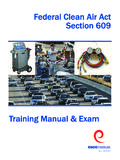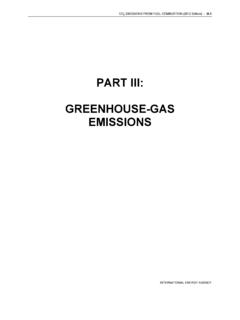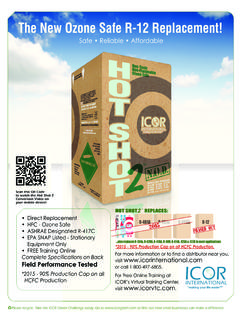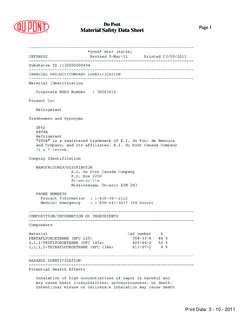Transcription of R-407C - Refrigerants
1 R- 407c Safety Data Sheet R- 407c 1. CHEMICAL PRODUCT AND COMPANY IDENTIFICATION PRODUCT NAME: R- 407c OTHER NAME: Difluoromethane, Pentafluoroethane, 1,1,1,2-Tetrafluoroethane USE: Refrigerant Gas DISTRIBUTOR: National Refrigerants , Inc. 661 Kenyon Avenue Bridgeton, New Jersey 08302 FOR MORE INFORMATION CALL: IN CASE OF EMERGENCY CALL: (Monday-Friday, 8:00am-5:00pm) CHEMTREC: 1-800-424-9300 1-800-262-0012 2.
2 HAZARDS IDENTIFICATION CLASSIFICATION: Gases under pressure, Liquefied Gas SIGNAL WORD: WARNING HAZARD STATEMENT: Contains gas under pressure, may explode if heated SYMBOL: Gas Cylinder PRECAUTIONARY STATEMENT: STORAGE: Protect from sunlight, store in a well ventilated place EMERGENCY OVERVIEW: Colorless, volatile liquid with ethereal and faint sweetish odor.
3 Non-flammable material. Overexposure may cause dizziness and loss of concentration. At higher levels, CNS depression and cardiac arrhythmia may result from exposure. Vapors displace air and can cause asphyxiation in confined spaces. At higher temperatures, (>250 C), decomposition products may include Hydrofluoric Acid (HF) and carbonyl halides. POTENTIAL HEALTH HAZARDS SKIN: Irritation would result from a defatting action on tissue. Liquid contact could cause frostbite. EYES: Liquid contact can cause severe irritation and frostbite.
4 Mist may irritate. INHALATION: R- 407c is low in acute toxicity in animals. When oxygen levels in air are reduced to 12-14% by displacement, symptoms of asphyxiation, loss of coordination, increased pulse rate and deeper respiration will occur. At high levels, cardiac arrhythmia may occur. INGESTION: Ingestion is unlikely because of the low boiling point of the material. Should it occur, discomfort in the gastrointestinal tract from rapid evaporation of the material and consequent evolution of gas would result.
5 Some effects of inhalation and skin exposure would be expected. DELAYED EFFECTS: None known. R- 407c _____ MSDS: R- 407c Page 2 of 8 Current Issue Date: April 2015 3. COMPOSITION / INFORMATION ON INGREDIENTS INGREDIENT NAME CAS NUMBER WEIGHT % Difluoromethane (HFC-32) 75-10-5 23 Pentafluoroethane (HFC-125) 354-33-6 25 1,1,1,2-Tetrafluoroethane (HFC-134a) 811-97-2 52 COMMON NAME and SYNONYMS R-22; HCFC-22 There are no impurities or stabilizers that contribute to the classification of the material identified in Section 2 4.
6 FIRST AID MEASURES SKIN: Promptly flush skin with water until all chemical is removed. If there is evidence of frostbite, bathe (do not rub) with lukewarm (not hot) water. If water is not available, cover with a clean, soft cloth or similar covering. Get medical attention if symptoms persist. EYES: Immediately flush eyes with large amounts of water for at least 15 minutes (in case of frostbite water should be lukewarm, not hot) lifting eyelids occasionally to facilitate irrigation. Get medical attention if symptoms persist.
7 INHALATION: Immediately remove to fresh air. If breathing has stopped, give artificial respiration. Use oxygen as required, provided a qualified operator is available. Get medical attention. Do not give epinephrine (adrenaline). INGESTION: Ingestion is unlikely because of the physical properties and is not expected to be hazardous. Do not induce vomiting unless instructed to do so by a physician. ADVICE TO PHYSICIAN: Because of the possible disturbances of cardiac rhythm, catecholamine drugs, such as epinephrine, should be used with special caution and only in situations of emergency life support.
8 Treatment of overexposure should be directed at the control of symptoms and the clinical conditions. 5. FIRE FIGHTING MEASURES FLAMMABLE PROPERTIES FLASH POINT: Gas, not applicable per DOT regulations FLASH POINT METHOD: Not applicable AUTOIGNITION TEMPERATURE: Unknown for mixture UPPER FLAME LIMIT (volume % in air): None* LOWER FLAME LIMIT (volume % in air).
9 None* *Based on ASHRAE Standard 34 with match ignition FLAME PROPAGATION RATE (solids): Not applicable OSHA FLAMMABILITY CLASS: Not applicable EXTINGUISHING MEDIA: Use any standard agent choose the one most appropriate for type of surrounding fire (material itself is not flammable) R- 407c _____ MSDS: R- 407c Page 3 of 8 Current Issue Date: April 2015 UNUSUAL FIRE AND EXPLOSION HAZARDS: R- 407c is not flammable at ambient temperatures and atmospheric pressure.
10 However, this material will become combustible when mixed with air under pressure and exposed to strong ignition sources. Contact with certain reactive metals may result in formation of explosive or exothermic reactions under specific conditions ( very high temperatures and/or appropriate pressures). SPECIAL FIRE FIGHTING PRECAUTIONS/INSTRUCTIONS: Firefighters should wear self-contained, NIOSH-approved breathing apparatus for protection against possible toxic decomposition products. Proper eye and skin protection should be provided.
